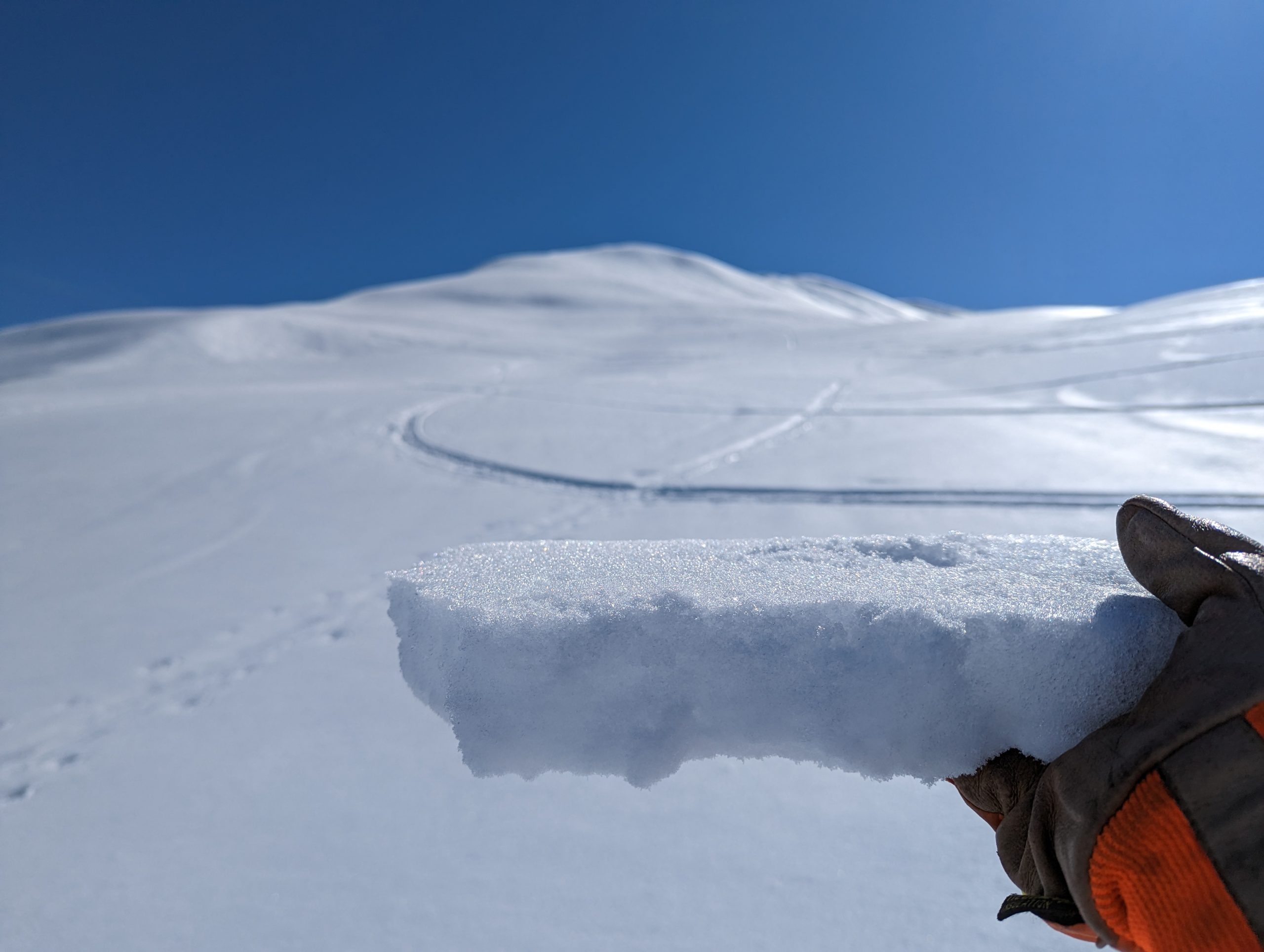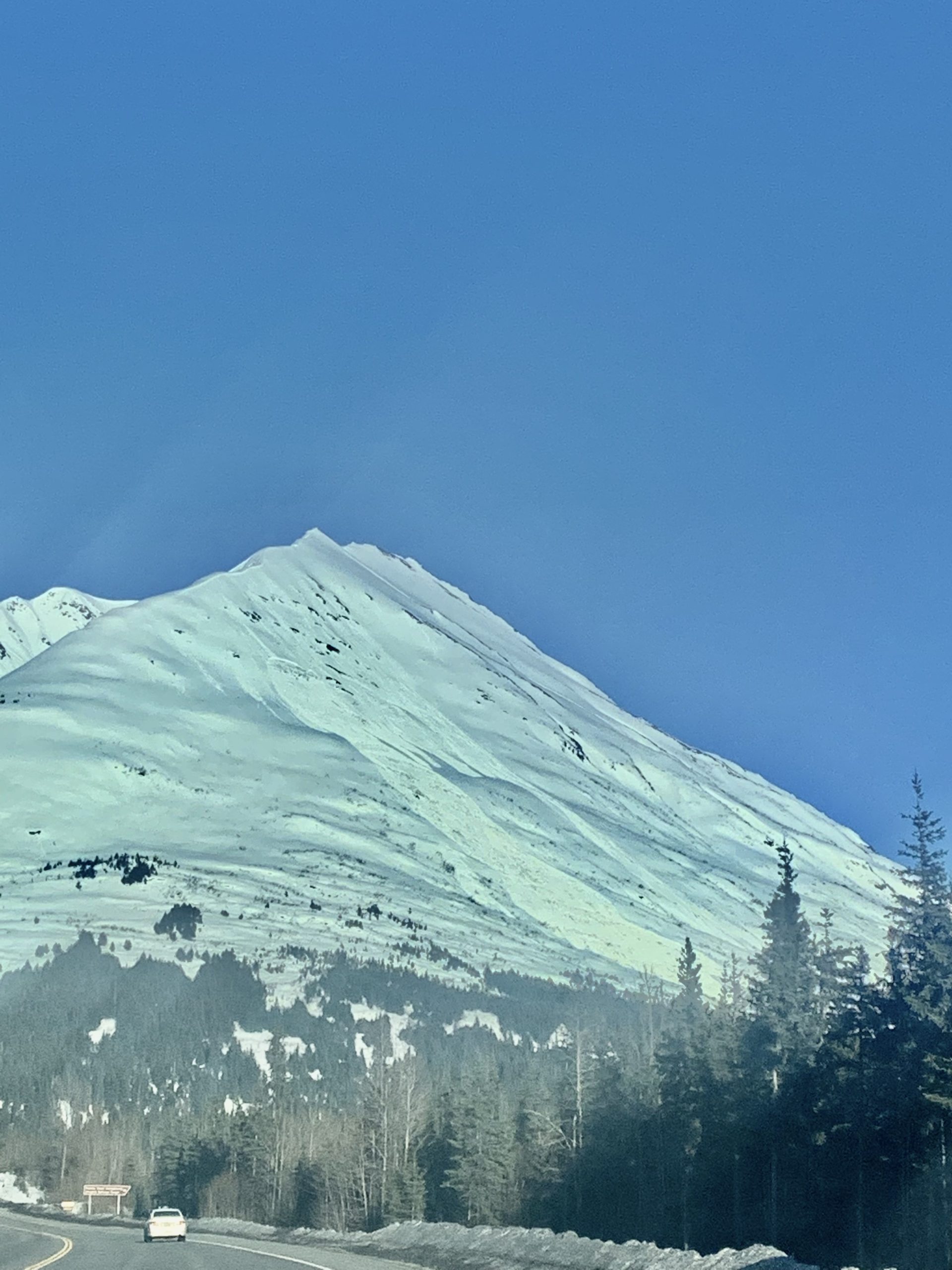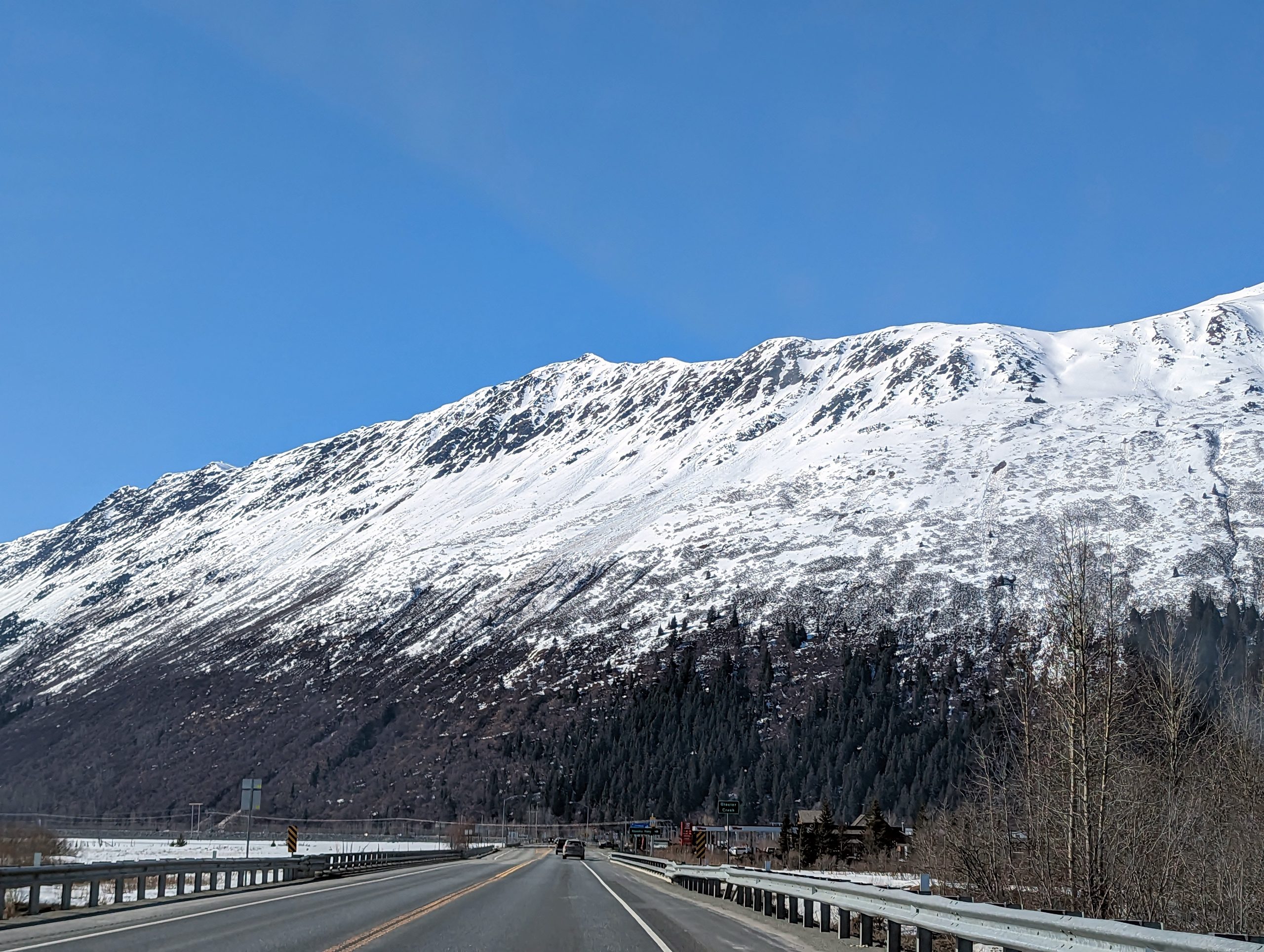Just as things were starting to get interesting, with wet slab avalanches observed yesterday on Pete’s S and in the Skookum Glacier area, the weather is reverting back to colder temperatures and cloudy skies. Highs are expected to stay in the low 30s F in the alpine today and mid to high 30s F at lower elevations. This should make wet avalanches much less likely today, but depending on how much sun finds it’s way through the cloud cover we could still see melting crusts in the afternoon and potential for wet loose avalanches especially at lower elevations and on steep southern aspects. Keep an eye out for roller balls, natural wet loose avalanches, and wet surface snow conditions as indicators of wet avalanche conditions.
Our main concern for human triggered avalanches continues to be the low likelihood but potentially high consequence scenario of finding a deeply buried persistent weak layer on shaded northern aspects which continue to hold dry snow. Earlier this week a group of skiers in Virgin Creek in Girdwood triggered a large avalanche ranging from 2-6′ deep on a steep NW aspect (see ob here). This was very unexpected since the last avalanche triggered on our deeply buried weak layer from mid-March was about three weeks ago and we have had little significant weather recently.
While we continue to believe that triggering an avalanche like this is unlikely, the possibility increases the potential consequences of seeking out steep high elevation north facing terrain. In a typical year this would be the time where conditions are prime for tackling larger objectives, but we have seen multiple close calls this week with skiers triggering avalanches and being carried over cliffs through complex terrain. The take home message is that our snowpack has some atypical weak layers this spring that make venturing into big terrain higher risk than most years.
Other hazards associated with the spring melt cycle include cornice fall and glide avalanche release, which are both very unpredictable and can produce large avalanches. We recommend minimizing time spent underneath large cornices or glide cracks.
 High elevation northerly aspects still holding onto dry snow but also potentially holding onto deeply buried persistent weak layers. Photo 4.21.23
High elevation northerly aspects still holding onto dry snow but also potentially holding onto deeply buried persistent weak layers. Photo 4.21.23
 Supportable 1-2″ thick melt freeze crust on a west aspect at about 2000′ which could still potentially melt enough to cause wet loose avalanches with the warm temperatures and cloud cover today. Photo 4.21.23
Supportable 1-2″ thick melt freeze crust on a west aspect at about 2000′ which could still potentially melt enough to cause wet loose avalanches with the warm temperatures and cloud cover today. Photo 4.21.23





